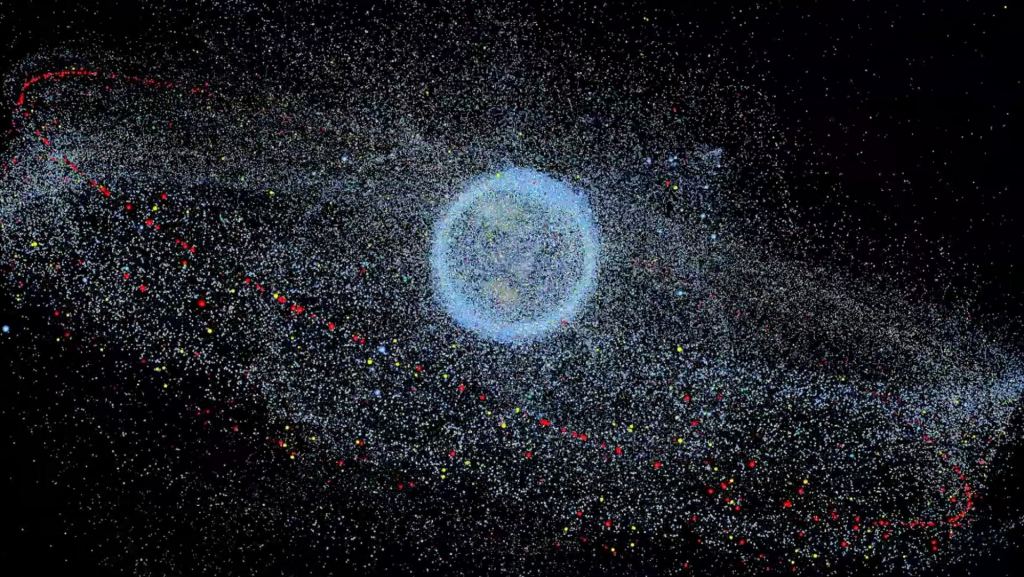We have a problem.
Ever since the launch of Sputnik 1 in 1957, we have been launching debris into space. Everything from space stations and large communication satellites to small CubeSats. With each launch, we also add things such as rocket parts and paint chips to the orbital pile. Right now there are more than a million objects orbiting Earth wider than a centimeter, and at least 130 million millimeter-sized objects. Most of it isn’t going to deorbit any time soon.
Orbits are so cluttered now that the International Space Station and other crewed missions often have to shift orbits from time to time to avoid collisions. There have been several satellite impacts from debris, which of course makes more debris. If we follow our current launch projects, there will come a time when collisions are common, leading to what is known as the Kessler cascade. Collisions make debris, and debris makes collisions, in a runaway process that makes survival in orbit impossible.
Kessler cascades have been portrayed in several works of fiction, from the Planetes manga to the movie Gravity. In Gravity the cascade is portrayed as happening suddenly, triggered just hours after the Russians destroy a test satellite. In reality, the process will be gradual. Like global warming, we know there will be a point of no return if we don’t change our ways. We just don’t know exactly where that hard line lies. Fortunately, there are several projects trying to solve this problem, one of which is a collaboration between the European Space Agency and a Swiss startup called ClearSpace.
 A map of debris orbiting Earth. Credit: ESA – European Space Agency
A map of debris orbiting Earth. Credit: ESA – European Space AgencyThe idea behind ClearSpace is to forcibly remove the largest and most dangerous debris by capturing it and forcing it to deorbit. Smaller debris will continue to be a problem, but if we can remove the big chunks it would be a great start. Currently, the ESA plans to launch a ClearSpace satellite in 2026 as a pilot mission. The goal will be to capture the Vega Secondary Payload Adapter (Vespa) upper-stage component, which was part of a launch in 2013. It’s about 100kg in mass and roughly 2 meters long.
The component doesn’t pose any major hazards, but it’s about the same size and mass as more dangerous satellites, and it is in a single solid piece. Or so we thought. Recent observations by the United States 18th Space Defense Squadron show that there are multiple objects orbiting near the adapter, and they weren’t there before. The new debris was likely caused by the hypervelocity impact of some small, untracked debris fragments. What was meant to be a simple mission is now complicated a bit by the new debris.
The ClearSpace team doesn’t think the new objects will pose a critical challenge, and the pilot mission is moving forward as scheduled. But these new observations emphasize just how important ClearSpace and similar missions are. Collisions are becoming more common, and the time for solutions is growing shorter.
You can learn more about the ClearSpace mission by checking out their website.

